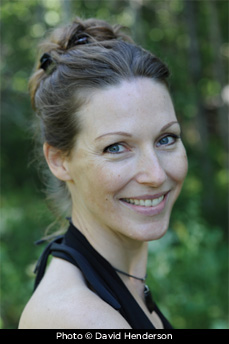
While Juliet is a work of fiction, it is steeped in historical fact. The earliest version of Romeo and Juliet was indeed set in Siena, and once you start digging into local history, you begin to understand why the story originated precisely where it did.
Perhaps more than any other Tuscan city, Siena was torn by fierce family feuds all through the Middle Ages, and the Tolomeis and the Salimbenis were famously pitted against each other in a manner that very much resembles the bloody rivalry between the Capulets and the Montagues in Shakespeare’s play.
That said, I have taken a few liberties in portraying Messer Salimbeni as an evil wife-beater, and I am not sure Dr. Antonio Tasso at Monte dei Paschi di Siena—who was kind enough to show my mother around Palazzo Salimbeni and tell her about its remarkable history—would appreciate the idea of a torture chamber in the basement of his venerable institution.
Nor will my friends Gian Paolo Ricchi, Dario Colombo, Alex Baldi, Patrizio Pugliese, and Cristian Cipo Riccardi be happy that I made the ancient Palio such a violent affair, but since we know so very little about the medieval version of the race, I hope they will give me the benefit of the doubt.
I also hope Saint Catherine of Siena will forgive me for involving her in the legend of Monna Mina and the curse on the wall, as well as in the story of Comandante Marescotti and the boy Romanino, where she appears as a baby in the Benincasa household. Both scenarios are my invention, and yet I have tried to remain faithful to the spirit of Saint Catherine’s early life in Siena, her remarkable personality, and the miracles attributed to her.
Archaeologist Antonella Rossi Pugliese was kind enough to take me on a walking tour of Siena’s most ancient parts, and it was she who inspired me to delve into the mysteries of the Siena underground, such as the Bottini caves, the lost cathedral crypt, and the remnants of the bubonic plague of 1348. Following her suggestion, my mother visited the old hospital, Santa Maria della Scala, where she discovered Saint Catherine’s chamber as well as the entrance to a medieval plague pit.
The less macabre parts of my mother’s research on Sienese history were primarily made possible by the Biblioteca Comunale degli Intronati, Archivio dello Stato, and Libreria Ancilli—which, by the way, is where Julie goes to have the index card that was hidden in her mother’s box deciphered—but we are also grateful for the illuminating insights of Professor Paolo Nardi; Padre Alfred White, OP; and John W. Peck, SJ, as well as the literary legacy of the late Johannes Jørgensen, a Danish poet and journalist whose biography of Saint Catherine offers a spellbinding insight into Siena in the fourteenth century. Furthermore, the Museo della Contrada della Civetta and the Siena municipal police have been tremendously helpful, the latter primarily for not arresting my mother during her many clandestine investigations into bank security systems and the like.
While on the issue of suspicious activities, I hasten to apologize to Direttor Rosi at Hotel Chiusarelli for staging a break-in at his beautiful establishment. As far as I know, there has never been a breach of security at the hotel, nor would the director and his staff ever interfere with the movements of their guests or remove personal belongings from their rooms.
I also need to emphasize that the artist Maestro Lippi—who is a real person—is not quite as eccentric as I have laid him out to be. Nor does he have a messy workshop in downtown Siena, but rather a breathtaking atelier in an old Tolomei castle in the countryside. I hope the Maestro will forgive me these artistic liberties.
Two friends from Siena have been particularly helpful and generous with their local knowledge: Avv. Alessio Piscini has been an inexhaustible resource of everything related to Contrada dell’Aquila and the Palio tradition, and author Simone Berni has patiently suffered a barrage of questions regarding Italian usage and Sienese logistics. I owe it to them both to say that, if any factual errors managed to sneak into the book, they are my own fault, not theirs.
I would also like to extend my very special thanks to the following people outside Siena: My friend and fellow freedom-fighter from the Institute for Humane Studies, Elisabeth McCaffrey, and my book-club sisters, Jo Austin, Maureen Fontaine, Dara Jane Loomis, Mia Pascale, Tamie Salter, Monica Stinson, and Alma Valevicius, who kindly critiqued an early draft.
Two people have been key in helping me turn story into book: My agent, Dan Lazar, whose enthusiasm, diligence, and savvy made it all possible, and my editor, Susanna Porter, whose keen eyes and expert touch helped to trim and tighten the book without getting me all tangled up. It has been an honor and a privilege to work with them both.
Needless to say, I am deeply grateful for the tremendous help and encouragement from all the wonderful people at Writers House and Random House, two households (dare I say) both alike in dignity. Maja Nikolic, Stephen Barr, Jillian Quint, and Libby McGuire in particular have been instrumental in realizing this book. And a thank-you also to Iris Tupholme at HarperCollins Canada for her constructive advice about the work.
And finally, I owe so much more than thanks to my husband, Jonathan Fortier, without whose love, support, and humor I could never have written this book, and without whom I would still be asleep, not even knowing it.
I have dedicated Juliet to my amazing mother, Birgit Malling Eriksen, whose generosity and devotion are boundless, and who spent almost as much time doing research for the story as I spent writing it. I hope the book is everything she prayed it would be.





